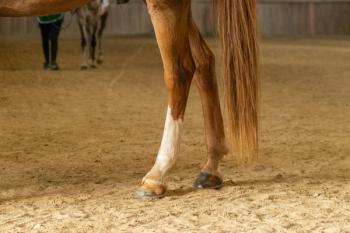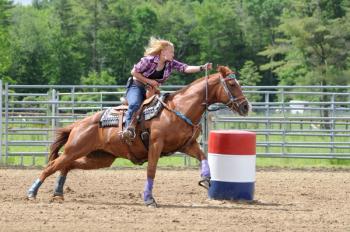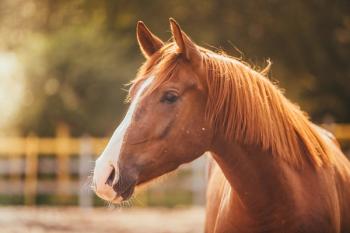
Training newborn foals (Proceedings)
The newborn young of predatory species are usually altricial. That is, they are quite helpless, neurologically immature, and have limited learning ability.
The newborn young of predatory species are usually ALTRICIAL. That is, they are quite helpless, neurologically immature, and have limited learning ability. Examples include the young of the dog, cat, and bear families. Similarly, predatory birds, such as eagles, hawks, and owls have helpless young, known as "Nidifugous nestlings." The human being is also an altricial species.
The newborn young of most of our familiar PREY species, on the other hand, are PRECOCIAL. Examples include the sheep, deer, goat, bovine and horse families, as well as such birds as ducks, geese, chickens, turkeys, and pheasant. Very soon after birth, or hatching, these young can fend for themselves, follow their mother and their group, and thereby escapes danger. Their senses are fully developed and they are neurologically mature.
In altricial species, some learning is possible in the newborn, but the CRITICAL LEARNING PERIODS are largely delayed during which socialization, species identification, and imprinting (both maternal and infant) occurs.
In precocial species, these critical learning periods occur immediately after birth. The horse, a precocial prey species, in which growth and maturity develop at remarkable speed, therefore has all of its critical learning periods compressed into its first days and weeks of life following parturition.
Learning, in any species, can occur at any age. However, learning is swiftest, most persistent, and most profoundly affects the attitudes and personality later in life if acquired during the formative critical learning periods.
So, the earlier training begins in the life of the horse, the more effective it will be providing that it is done properly. If done improperly more harm than good may be done because the learning at this tender age is so fast and so lasting.
It is important to understand that the newborn foal's senses are completely functional and its brain capable of absorbing information not only as fast as it will later in life, but even faster. This is in contrast to such altricial species as puppies and human babies wherein learning capacity is limited in the newborn and gradually expands with growth and maturity.
Moreover, by exposing the brain of the newborn foal to stimuli immediately post partum, it is not necessary to override or displace previously learned information. The newborn foal's behavior is genetically predetermined. Environmental learning has not yet been introduced, and by initiating it as soon as the foal is born we can dramatically shape the foal's future behavior and its reactions.
Over forth years ago I began experimenting with what I called "imprint training" because it involved training (learning by reinforcement) during what I believe to be the foal's imprinting period (immediately post partum).
The method, popularized by books, video tapes, and seminars I have conducted, is now in use all over the world, and in all aspects of the horse industry.
Still, there are frequent concerns expressed about the method, and many breeders are deterred by these concerns, as follows:
1. It isn't "natural
Domestication isn't "natural," but as long as we domesticate animals we should use whatever methods are most efficacious, as long as they are humane.
2. It will interfere with the bonding between mare and foal
This is a complete fallacy. I have never seen my method interfere in any way between mare and foal and, in fact, most cases of foal rejection by the mare can be prevented by my method.
3. Imprint trained foals are full and unresponsive
False! They are gentle and trusting and, if the training is done properly, they are more responsive. Such foals are winning on the racetrack, in the show arena, and in all other disciplines.
4. Imprint trained foals are spoiled and disrespectful
Again, false! If the method is done properly, these foals are completely respectful. Although, admittedly, many people do not use the method correctly and they do spoil some foals.
5. The mare will resent the human working with the foal and become aggressive
In the four decades that I have used this method, I have never seen a mare become aggressive toward humans afterward, a rather common phenomenon in mares post partum. In fact, I believe that such aggressiveness can be prevented by handling the foal as soon as it is born, even before the mare arises.
Moreover, there is strong evidence that mares which were themselves subjected to imprint training at birth, remember it and are quite unconcerned and accepting of the method when, years later, it is used on their own foals.
6. The method induces Learned Helplessness and is therefore inhumane
This is completely false. Learned Helplessness produces individuals which are inactive in the presence of frightening stimuli and with subsequent impaired learning ability. My foals are very responsive to stimuli, eager learners, and perform exceptionally well in competition.
In my presentation I will not concentrate on teaching the method, but rather show with the use of video tape, the dramatic results that can be attained by using this method of very early training.
Newsletter
From exam room tips to practice management insights, get trusted veterinary news delivered straight to your inbox—subscribe to dvm360.




